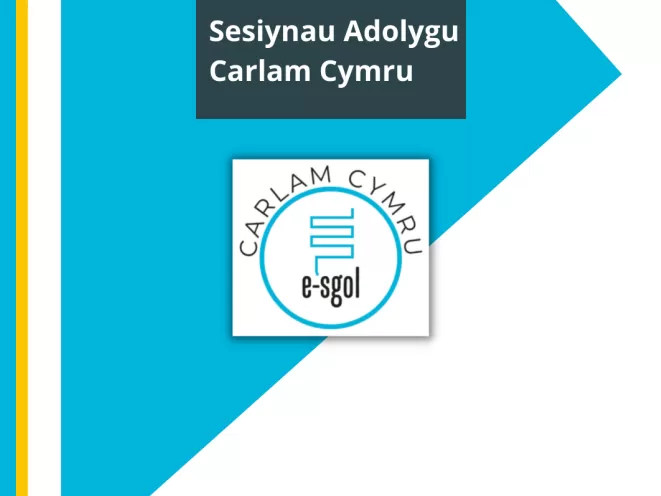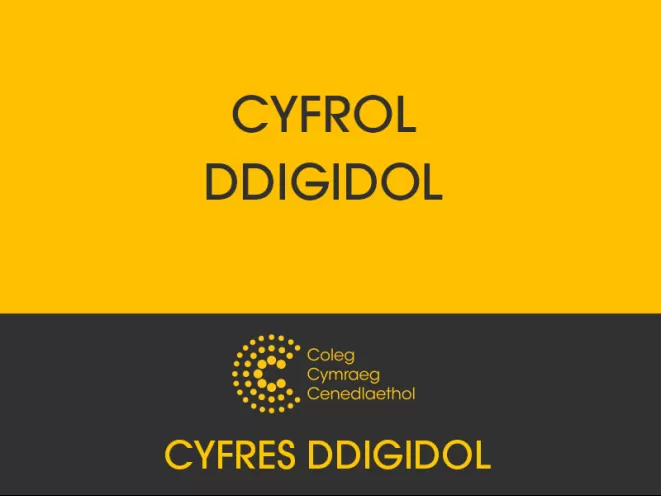Tools to simplfy the whole observing process with the LCO telescope network via the Comet Chasers project. Tools are available for planning and organising observations, making image requests, and creating animations of the telescope images. These tools are aimed at students in primary and secondary schools who take part in the Comet Chasers project – but will also be useful for under-graduate and post-graduate students for simplifying the process of requesting images of comets/asteroids from LCO. Full nstructions are currently available on the website for two tools, all tools will have instructions in the near future.
Astro Tools (Comet Chasers)
Carlam Cymru Revision Sessions
Recordings of revision sessions in different subject areas that were commissioned by e-sgol for GCSE, AS and A level students during 2021. There are GCSE revision sessions on: Mathematics Welsh Welsh as a second language Biology Physics Chemistry History Geography There are AS revision sessions on: Mathematics Welsh Biology Physics Chemistry History Geography There are A level revision sessions on: Mathematics Welsh Biology Chemistry History Geography Psychology
Hywel Turner Evans, Aled Isaac, ‘Cronni Plasma o Bositronau’ (2021)
A review of the process of accumulating a positron (antielectron) plasma is presented. Positron sources and techniques to moderate, accumulate and characterise positrons are described, with examples of data collected using the positron beamline at Swansea University. Motivation is given for studying antimatter to explain the composition of the universe, in addition to some historical context. The use of positrons beyond research in fundamental physics is also discussed.
Y Gwyddonydd – cyfrol 33, 2013
Y Gwyddonydd, Cyfrol 33 – Rhifyn Hanner Canmlwyddiant, 1963-2013 Ymddangosodd Y Gwyddonydd, cyfnodolyn gwyddonol Cymraeg, am y tro cyntaf yn 1963, ac fe'i cyhoeddwyd yn gyson hyd at 1996. I ddathlu'r achlysur fe wnaeth y Coleg Cymraeg Cenedlaethol ariannu a chydlynu rhifyn dathlu arbennig, gan hefyd redeg cystadleuaeth gwyddonydd ifanc. Lansiwyd y rhifyn arbennig yn Eisteddfod Genedlaethol Sir Ddinbych, 2013.
I'r Lleuad a Thu Hwnt – Eirwen Gwynn
Cyhoeddwyd y llyfr hwn yn wreiddiol yn 1964 pan oedd y ras i'r lleuad yn ei anterth. Ceir ynddo hanes yr ras fawr rhwng Unol Daleithiau America a Rwsia ac amlinelliad hefyd o'r gweithgareddau eraill yn y gofod. Fe'i ysgrifennwyd er mwyn esbonio egwyddorion y maes i'r Cymro cyffredin heb gefndir gwyddonol.
Dibendraw (2014 a 2015)
Mae o’n cwmpasu popeth, mae o ym mhopeth, mae’n barhaus ac yn ddiddiwedd. Beth ydy o? Wel gwyddoniaeth wrth gwrs, a dyna yw pwnc y gyfres Dibendraw. Oherwydd rhesymau hawlfraint bydd angen cyfrif Coleg Cymraeg i wylio rhaglenni Archif S4C. Mae modd ymaelodi ar wefan y Coleg Cymraeg Cenedlaethol i gael cyfrif.
Building Wales's bridges, Ben Barr (2008)
The paper reports on three epochs of bridge building in Wales. The first period, from Roman times to the start of the Industrial Revolution, was dominated by the use of local materials (stone and timber) by local craftsmen. The second period was an integral part of the Industrial Revolution when new bridge building materials (cast iron, wrought iron and steel) were developed and used in the construction of canal and railway bridges. The third period was associated with the growth of traffic following World War II when concrete and steel became the dominant bridge building materials during the development of the trunk roads and motorways. The paper shows, in simple terms, the fundamental structural engineering developments underpinning these developments as new materials became available for bridge building. In particular, the evolvement of various beam cross-sections, tubes and trusses is discussed. Attention is also given to the significant contribution of four world-renowned bridge builders: William Edwards who built the famous arch bridge at Pontypridd; Thomas Telford who built the Pontcysyllte Aqueduct and the Menai Suspension Bridge; Robert Stephenson who built tubular bridges at Conway and over the Menai Straits and I. K. Brunel who built the unique Chepstow Railway Bridge and the railway timber viaduct at Landore, Swansea. Finally, the paper draws attention to some of the unique bridges of Wales.
Design of a ‘Dual Wavelength Laser’
This article is based upon the idea of designing a laser that can emit light at two different wavelengths, at the same time. This kind of laser has already been produced in the past; however, the difference between the two wavelengths was much larger. We intend to reduce this difference, while still being able to emit at two different wavelengths. This article will also address the effects of linewidth broadening where it is important to know how close the two wavelengths can be before we only see one broad peak in the spectrum, rather than two individual narrow peaks. Doing this will allow us to generate terahertz radiation from just one laser source.
The sun's corona: A study of the structure of the sun's atmosphere
The knowledge we have about the sun’s corona is based on observations made from afar. It is impossible, therefore, to speculate about the three-dimensional structure of the corona directly. This article outlines the history of the study of the structure of the corona, and describes new techniques which for the first time enable us to know the structure of the corona in detail. A description is given of the change in the structure over the life cycle of the sun, together with new information about the connection between the magnetic field and coronal density and new results concerning the rotation rates of the corona. The results show that knowledge about the corona can be greatly increased by applying new tomography techniques, enabling and stimulating further studies of the corona in years to come.
The expansion of solar active regions into space
The Sun’s complex magnetic field permeates through the photosphere (the Sun’s surface) and into the corona (the Sun’s atmosphere). New magnetic fluxes arise from the photosphere in the form of closed loops which expand into the corona. This is a typical process of coronal active regions which creates and replenishes the coronal field. Magnetic field and plasma (energetic ionised gas) are transported through the corona and flow with the solar wind into the heliosphere (the region of space influenced by the Sun including the solar system). Transportation of this kind is seen during explosive events from the Sun. According to current thinking, the only transport of material from the closed field of active regions is through eruptive events, so in the absence of eruptions the active region plasma is isolated from the solar wind. This article presents evidence to the contrary. The observations show the first evidence of the direct, quiescent expansion of active region closed field into the extended corona without an eruption, thus forming an important part of the solar wind. The evidence is gained through the application of new image processing techniques to coronagraph observations. The observations are presented, and their implications are discussed in the context of the current model of Sun-heliospheric connections.
A multiwavelength model to visualise and analyse magnetic fields in the solar corona
The Sun is a dynamic, complex system, full of interesting and important features. These kinds of features can be modeled in various ways, such as with Non-Linear Force-Free Field (NLFFF) models. In this paper, NLFFF simulations are built. The intention is to estimate spatial patterns of the magnetic field in the solar chromosphere and corona and changes in the free energy in the system, in particular losses of energy as a result of solar eruptions. Most existing models have a temporal cadence of 12 minutes at best (that is, the situation is simulated every 12 minutes). The method discussed in this paper makes various approximations but it aims to achieve a temporal cadence of 45 seconds. The method used is found to successfully simulate synthetic data, and when dealing with real data, it produces images which frequently correspond well to observations. Several reductions in the free energy of the system are seen, corresponding to observed eruptions.
Turbulence in the solar wind
The Cluster spacecraft are used in order to investigate the solar wind, and because there are four spacecraft, it allows a measurement of the 3-D structure of the solar wind. Since turbulence is a 3-D phenomenon, Cluster is ideal for investigating turbulence. These observations show that the turbulence at proton gyration scales are dominated by Kinetic Alfvén waves as well as magnetic vortices. This research strengthens the hypothesis that Kinetic Alfvén waves are present in the solar wind and suggests for the first time that waves and magnetic vortices can coexist in the solar wind.












